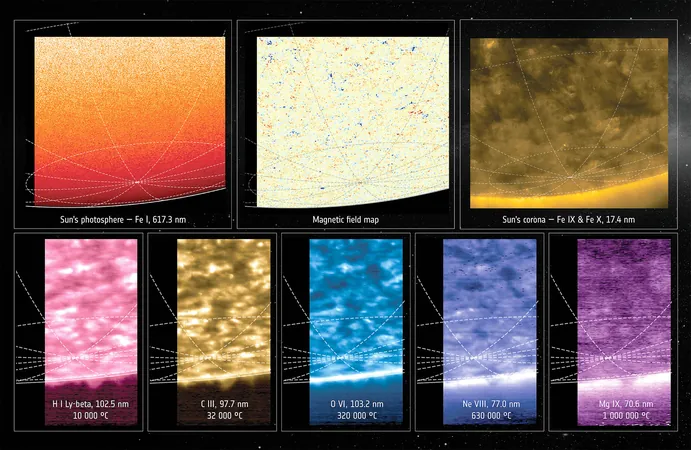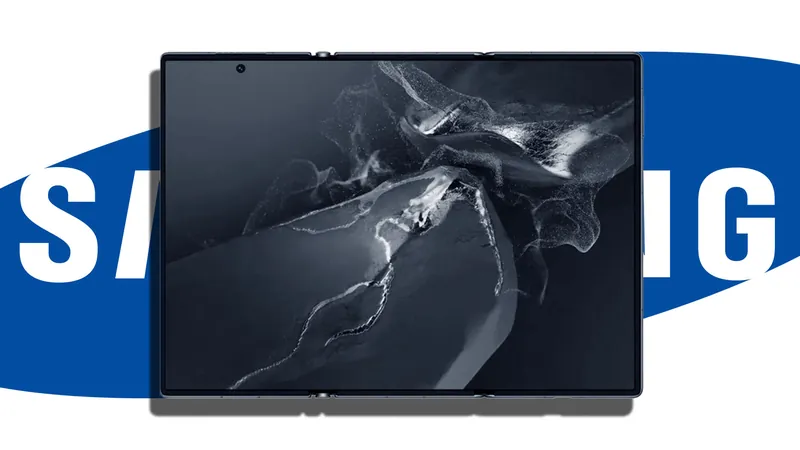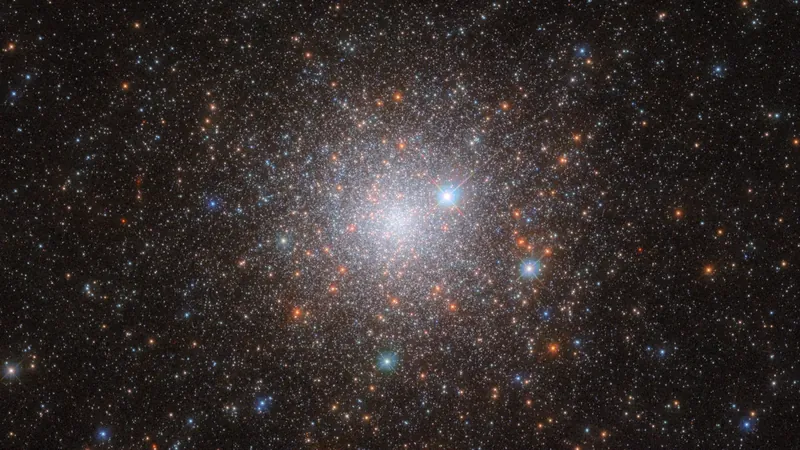
First-Ever Images of the Sun's South Pole Unveiled by Solar Orbiter Mission
2025-06-16
Author: Yu
A Groundbreaking Solar Exploration
For centuries, humanity has observed the Sun from a singular perspective, primarily along its equator. This constant vantage point, shared by Earth and all spacecraft, has rendered the Sun's polar regions shrouded in mystery. However, this is changing thanks to the revolutionary Solar Orbiter mission.
Historic First Views of the Pole
On March 23, 2025, Solar Orbiter reached an unprecedented position, tilting 17° below the Sun’s equator, allowing it to peer directly into the Sun's south pole for the very first time. This marks a monumental step in solar science.
"Today we unveil humanity's first-ever views of the Sun's pole," proclaimed Prof. Carole Mundell, ESA's Director of Science. "Understanding the Sun is critical as it impacts life on Earth and our technological systems. These unique images reinvigorate solar research like never before."
Advanced Imaging Capabilities
The breathtaking images captured on March 16-17, 2025, emerged from a collaboration of three powerful instruments: the Polarimetric and Helioseismic Imager (PHI), the Extreme Ultraviolet Imager (EUI), and the Spectral Imaging of the Coronal Environment (SPICE). Together, they provided a multi-dimensional view of solar phenomena.
Unveiling Solar Activity
Each instrument contributes a unique perspective on solar activity. PHI captures visible light, mapping the magnetic fields on the Sun’s surface. EUI reveals the Sun's corona in ultraviolet light, while SPICE highlights emissions from various temperature zones, painting a detailed picture of solar gas movements.
"The Sun’s poles are literally unexplored territory, and we didn't know what to expect from these first observations," stated Prof. Sami Solanki, leader of the PHI instrument team. The combined data tells a complex story of material movement through the Sun's outer layers, revealing swirling patterns that may resemble polar vortices akin to those found on Venus and Saturn.
Magnetic Mysteries and Early Discoveries
One of the most startling findings from Solar Orbiter is the chaotic state of the magnetic field at the Sun's south pole. Unlike typical magnetic fields with clear orientations, both polarities were detected at the same pole, a phenomenon occurring briefly during the Sun's solar maximum.
As the solar cycle progresses, one polarity usually dominates, leading to stable conditions during solar minimum. "How this magnetic build-up happens is still a mystery, but Solar Orbiter is observing this critical process from a vantage point like no other," explained Prof. Solanki.
Measuring Solar Wind Dynamics
Another significant advancement from Solar Orbiter comes from the SPICE instrument, which has begun tracking atmospheric motion. By capturing light from elements like hydrogen, it measures particle velocities, revealing how fast solar particles are moving and illuminating patterns of gas flow.
These Doppler measurements, facilitated by Solar Orbiter’s unique positioning, are set to revolutionize our understanding of solar wind dynamics—an essential goal of the mission.
Unlocking Solar Secrets
These initial observations are merely the tip of the iceberg. Comprehensive data from Solar Orbiter's pole-to-pole journey is expected to arrive by October 2025, with ongoing data collection poised to enhance our understanding of solar phenomena.
"This is just the beginning of Solar Orbiter’s ascent: in the years to come, we’ll gain increasingly better views of the Sun's polar regions, transforming our grasp of solar magnetic fields and wind dynamics," said Daniel Müller, ESA’s project scientist.
With Solar Orbiter finally revealing the Sun’s hidden poles, scientists hope to gain insights that could help predict solar flares and manage the technology we rely on on Earth.
Collaborative Mission
The Solar Orbiter mission is led by the European Space Agency (ESA), in partnership with scientific teams from esteemed institutions including the Max Planck Institute for Solar System Research and the University of Paris-Saclay.




 Brasil (PT)
Brasil (PT)
 Canada (EN)
Canada (EN)
 Chile (ES)
Chile (ES)
 Česko (CS)
Česko (CS)
 대한민국 (KO)
대한민국 (KO)
 España (ES)
España (ES)
 France (FR)
France (FR)
 Hong Kong (EN)
Hong Kong (EN)
 Italia (IT)
Italia (IT)
 日本 (JA)
日本 (JA)
 Magyarország (HU)
Magyarország (HU)
 Norge (NO)
Norge (NO)
 Polska (PL)
Polska (PL)
 Schweiz (DE)
Schweiz (DE)
 Singapore (EN)
Singapore (EN)
 Sverige (SV)
Sverige (SV)
 Suomi (FI)
Suomi (FI)
 Türkiye (TR)
Türkiye (TR)
 الإمارات العربية المتحدة (AR)
الإمارات العربية المتحدة (AR)